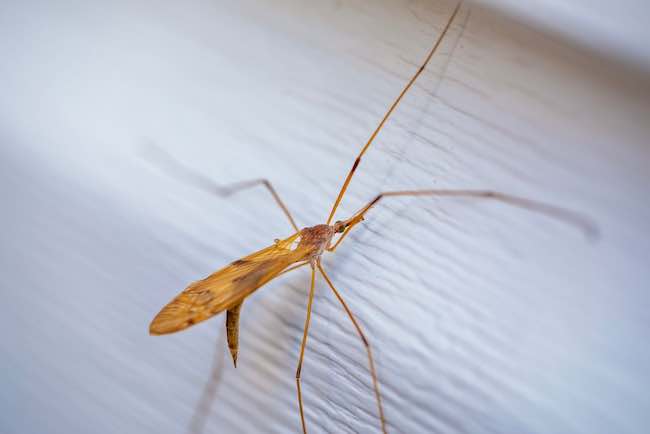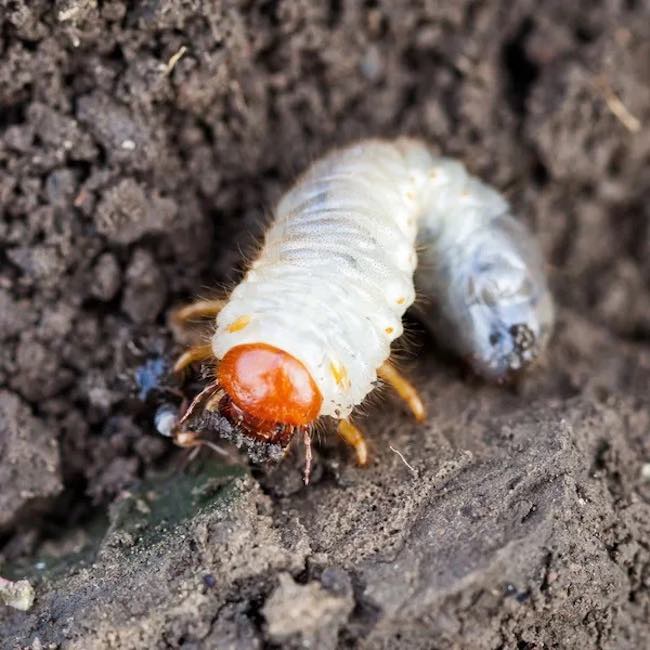Daddy longlegs and chafer grub damage on your lawn

Daddy longlegs point to leather jackets in your lawn and possible damage
As the climate continues to change, the United Kingdom has seen a rise in two troublesome lawn pests: leather jackets and chafer grubs. These subterranean insects might not be on your radar, but they can wreak havoc on your carefully manicured lawn. In this article, we will explore how to identify these pests, the damage they can cause, and the use of nematodes as a biological control method to protect your green space.
Leather Jackets
How to Identify
Leather jackets are the larvae of crane flies, commonly known as “daddy longlegs.” They are cylindrical, grayish-brown larvae that can grow up to 4 cm in length. Leather jackets can often be found just beneath the surface of your lawn.
Damage Caused
Leather jackets are notorious for their voracious appetite. They feed on the roots of grass, weakening the plants and leaving your lawn susceptible to various stresses. If left unchecked, these pests can cause yellowing patches, thinning grass, and even bare spots in your lawn.
Spring and Autumn Treatments using Nematodes (Steinernema feltiae)
Nematodes are microscopic roundworms that play a vital role in controlling various garden pests. When it comes to leather jackets, Steinernema feltiae nematodes are your allies. They are a natural and environmentally friendly way to combat these lawn-damaging insects.
Nematodes work by infecting the leather jacket larvae. Once they enter the larvae, nematodes release bacteria that kill the host. This biological control method is safe for humans, pets, and beneficial insects. To apply nematodes, follow the instructions on the product packaging carefully. It is crucial to choose the right time for application, typically in early spring or autumn when leather jacket larvae are active near the surface.
Chafer Grubs

How to Identify
Chafer grubs are the larvae of various species of beetles. They are creamy-white, C-shaped larvae that have distinctive legs and a brown head. These grubs can be found in the soil, feeding on the roots of your lawn.
Damage Caused
Chafer grubs are equally destructive, if not more so, than leather jackets. They can cause extensive root damage, leading to grass that easily lifts and dies. This results in patches of dead or dying grass that are highly attractive to foraging animals like birds, foxes, and badgers, which can further damage your lawn.
Spring and Autumn Treatments using Nematodes (Heterorhabditis bacteriophora)
To combat chafer grubs, consider using Heterorhabditis bacteriophora nematodes, another species of beneficial roundworms. These nematodes, like their counterparts, are a biological control method that specifically targets chafer grubs.
Nematodes work by infecting the chafer grub larvae in a similar manner to their action on leather jacket larvae. Once inside, they release bacteria that lead to the grub’s demise. To apply nematodes effectively, ensure your lawn is well-watered before application. This helps the nematodes move through the soil to reach their target.
How Nematodes Work: A Biological Control
Nematodes are an excellent example of biological control in action. They are natural predators of various soil-dwelling pests. When applied to your lawn, nematodes seek out their prey, infect them, and ultimately kill them, leaving your grass unharmed.
Unlike chemical pesticides, nematodes do not harm beneficial insects, birds, or mammals. They are a sustainable and environmentally friendly solution to pest problems in your lawn. Moreover, they do not leave harmful residues or affect the quality of your soil.
Leather jackets and chafer grubs might be small, but their impact on your lawn can be significant. With the help of nematodes, you can protect your green oasis from these destructive pests in a safe and eco-friendly way. By understanding how to identify these pests and when to apply nematodes, you can ensure your UK lawn remains healthy and lush, even in the face of climate change and warming soil conditions.